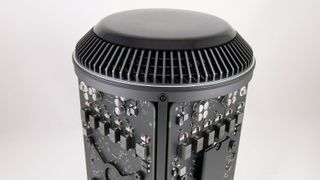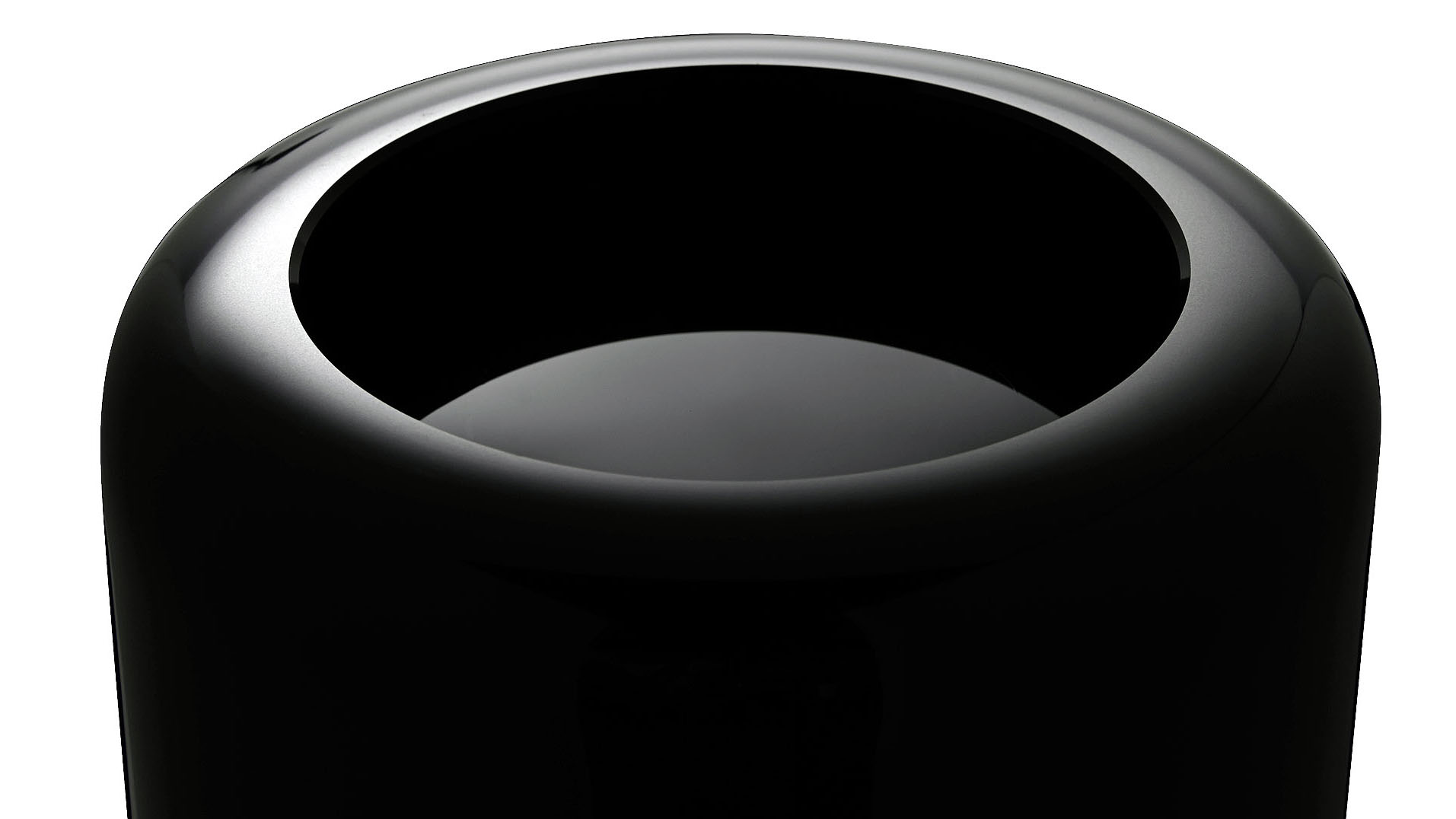Why you can trust TechRadar
Benchmarks
- Geekbench 3 single core: 3656
- Geekbench 3 multicore: 25490
- Handbrake: 15 mins 60 secs
- Boot Time: 18 secs
- Cinebench R10 Single core: 5895
- Cinebench R10 Multicore: 34141
- Cinebench R15 OpenGL: 88.37 FPS
- Cinebench R15 CPU: 1180 cb
- Unigine Heaven 4.0, FPS: 27.6
- Unigine Heaven 4.0, Score: 695
- Arkham City, 1080: 79 FPS
- Arkham City, Native (4K): 48 FPS
- Blackmagic Read: 869.6
- Blackmagic Write: 951.7
- NovaBench, Score: 2342
- NovaBench, RAM: 311
- NovaBench, CPU: 1418
- NovaBench, Graphics: 545
- NovaBench, Hardware: 68
As you'd expect from a high-end Mac Pro – especially a custom-enhanced model such as the one on review here – performance is excellent.
The new 2013 Mac Pro can drive up to three 4K monitors at once. That's three screens, each with a pixel resolution of 3840x2160, four times that of high-definition 1080 screens. Software that's optimised to take advantage of the two graphics cards really flies. Its fast flash storage is ideal for video editors too. The latest release of Apple's own Final Cut Pro X is designed to take full advantage of the power offered by the new Mac Pro.
Using its multi-cam feature, on the new Mac Pro you can view nine feeds of 4K video at once, with no stuttering or lag. The previous generation of Mac Pro could manage four. Video editors who work in Ultra HD will experience a hands-on immediacy that simply wasn't possible before.
According to Apple, the new Mac Pro 'redefines what it means to be expandable'. Whereas the last generation could be expanded by opening the casing and fitting new hard drives, replacing the graphics card or adding new PCI Express cards, the new Mac Pro's expansion options are largely focussed on its four USB 3.0 ports and six Thunderbolt 2 ports on three Thunderbolt controllers (this is the first time more than a single controller has been used on a Mac).

That's not to say the new Mac Pro's internal components can't be upgraded. At the flick of a switch the cylindrical cover can be removed, exposing the graphics and processor boards within.
The solid state drive can be removed and slotted into a different Mac Pro. If you have a Mac Pro at home and another at work, you can use the same SSD in both, effectively carrying your computer in your pocket with minimal disassembly. As welcome as this is, some might bemoan the lack of opportunities for internal expansion. Although the Thunderbolt 2 port has enough bandwidth to make performance a non-issue in this respect, adding (for example) extra storage on a new Mac Pro demands an external drive, with its own power supply and desk space. The tower models that preceded it offered four internal bays, where you could slot relatively cheap bare drives, with no clutter and no extra power supply needed.
Because Apple wisely made the new Mac Pro's graphics cards and SSD user-removable, it's theoretically possible to upgrade these internal components by replacing the ones supplied. But at the time of writing there's nothing on the market to replace them with. It's possible third-party manufacturers will release Mac Pro-specific components in the future, but as it wouldn't be possible to use them in anything other than a Mac Pro, they might be reluctant to make the investment. RAM is industry-standard, and can be added or replaced by the end user.
Like the Core series chips, the Xeon E5 processor used here offers Hyper Threading and Turbo Boost features. Hyper Threading means each of its eight cores can run two threads simultaneously, for 16 virtual cores, and at times of high processing needs, Turbo Boost takes the clock speed from 3GHz to up to 3.9GHz.
The new technologies certainly proved their worth in our benchmarking tests, as you can see from the results above, but it's worth noting that three of our four graphics test – the Batman: Arkham City frame rate test, the Cinebench tests and the Unigine Heaven test – can at present only use one of the two graphics processors. No doubt they – and third-party Mac applications built for the pro user – will be optimised to get the most out of the new machine soon. In the Novabench test, which does use both GPUs, the new Mac Pro was over 56% up on an iMac custom-configured with an NVIDIA GeForce GTX 780M, the top-of-the-range graphics option in a Mac other than the Mac Pro.
Most Popular






